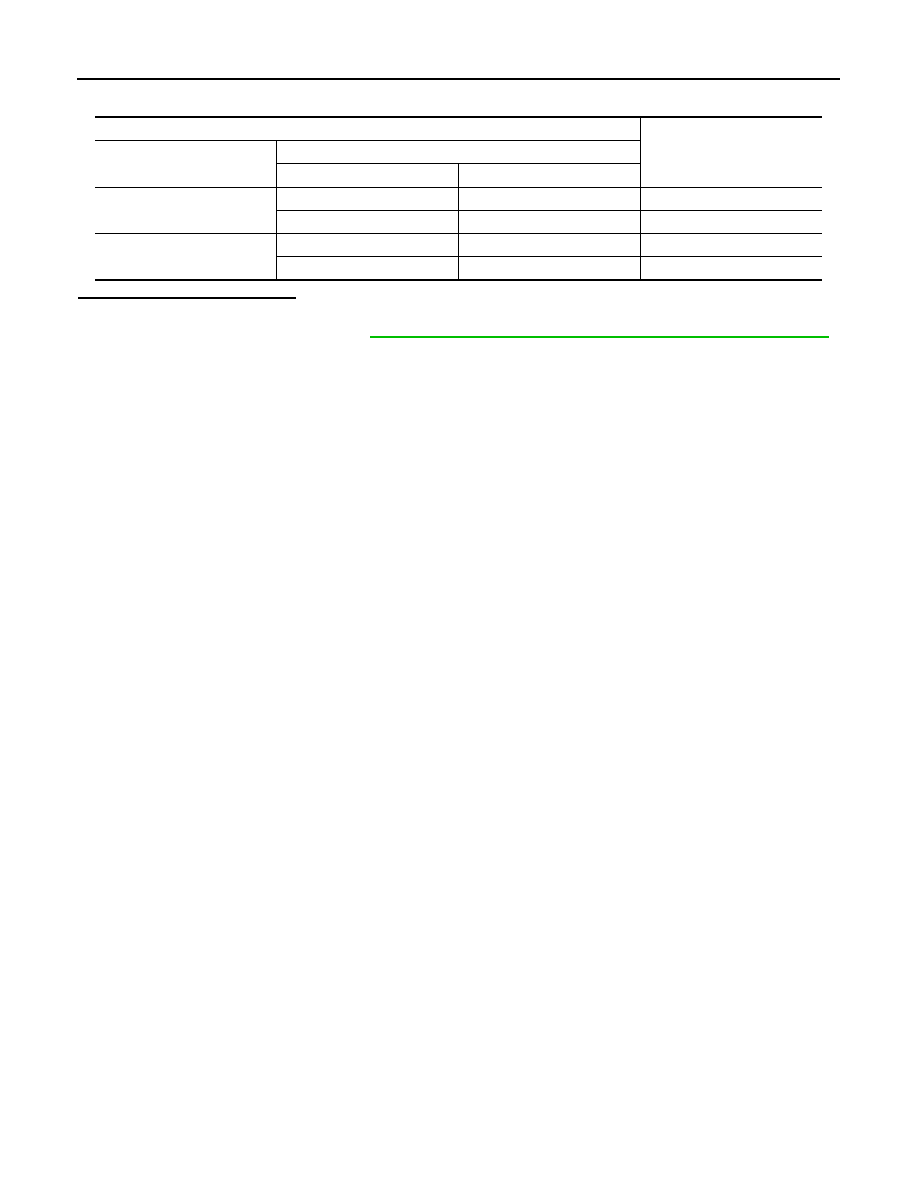Nissan March K13. Manual - part 462

MIR-24
< DTC/CIRCUIT DIAGNOSIS >
DOOR MIRROR (OPEN/CLOSE MOTOR)
3.
Apply 12V to each power supply terminal of door mirror motor.
Is the inspection result normal?
YES
>> INSPECTION END
NO
>> Replace door mirror. Refer to
MIR-35, "DOOR MIRROR ASSEMBLY : Removal and Installation"
.
Door mirror
Operational direction
Connector
Terminal
(+)
(–)
D23 (Driver side)
5
6
AUTO/OPEN
6
5
CLOSE
D3 (Passenger side)
5
6
AUTO/OPEN
6
5
CLOSE